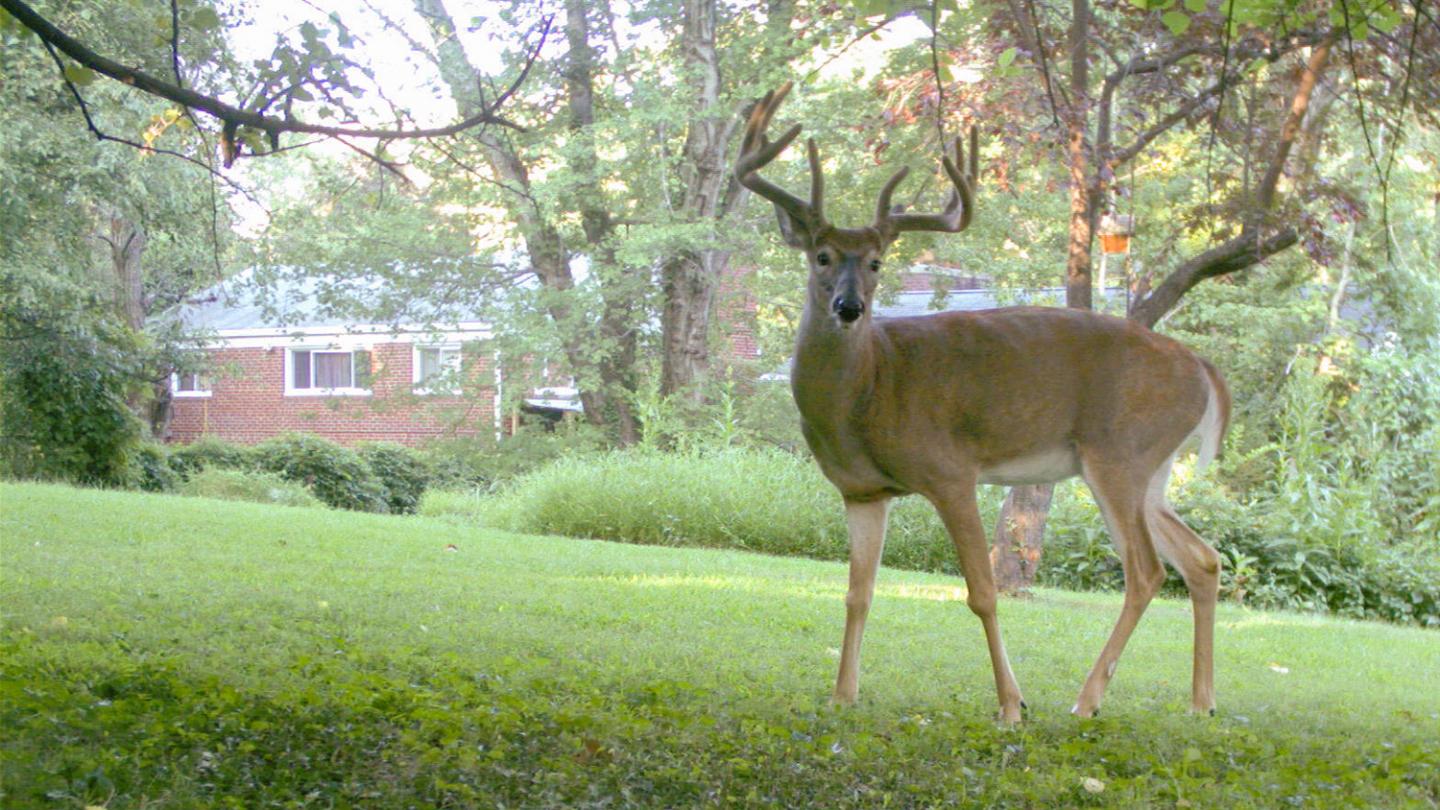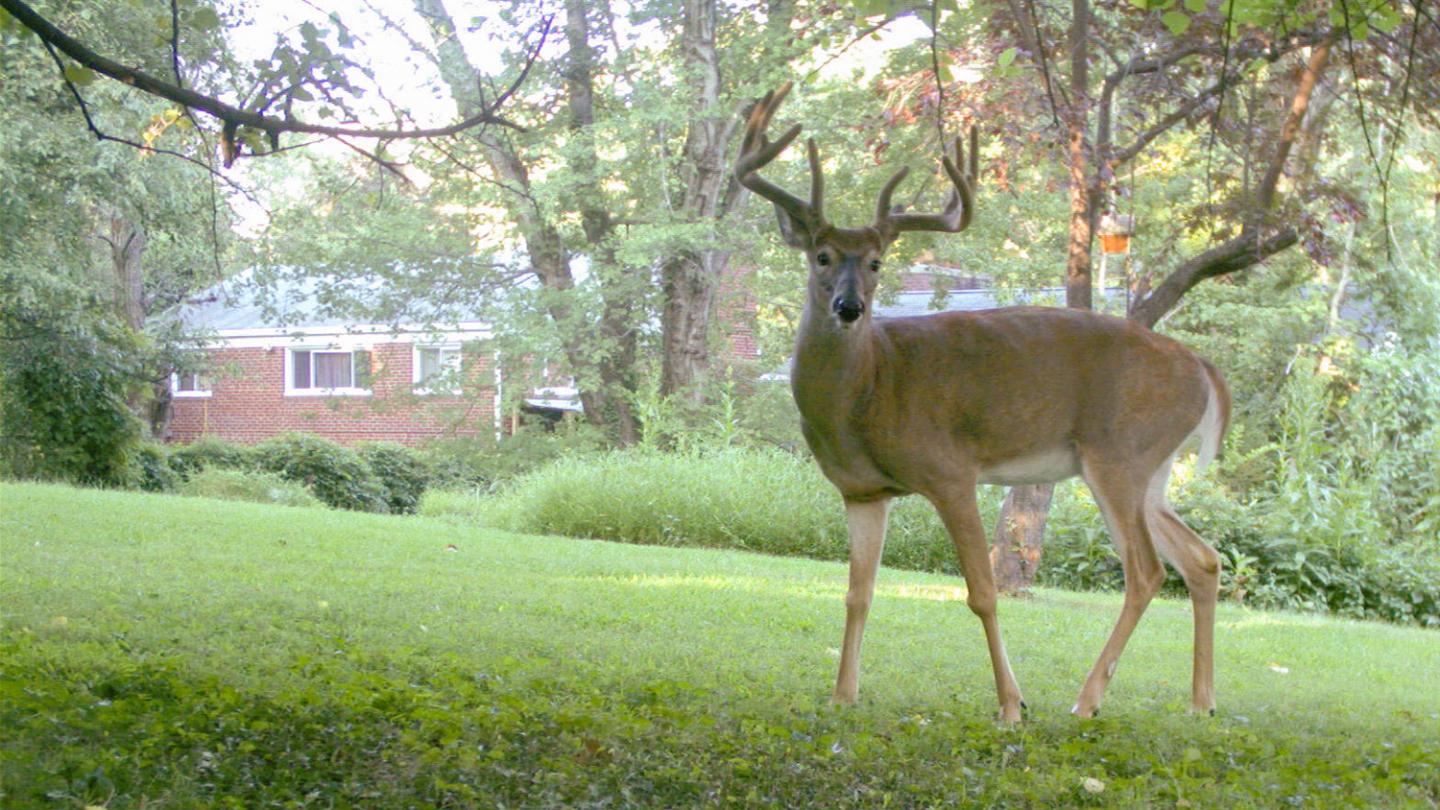
Credit: Arielle Parsons
It's a jungle out there in the suburbs, where many wild mammals are thriving near humans. That's the conclusion of a large-scale study using camera trap images from hundreds of citizen scientists in Washington, D.C., and Raleigh, North Carolina.
The study contradicts assumptions that developed areas have fewer mammals and less variety in mammal species, says lead author Arielle Parsons, researcher with the North Carolina Museum of Natural Sciences and Ph.D. student at North Carolina State University.
"We found there wasn't a significant difference in mammal populations between the suburban areas and the wild areas in terms of how many species used them and the intensity with which they used those areas, which was very surprising to us," Parsons says. "That would seem to indicate that the impact of suburban areas in particular is less dire for many mammals than we previously thought and that perhaps there is a certain level of adaptation of mammals to humans."
Researchers worked with citizen scientists to monitor wildlife with camera traps placed at more than 1,400 locations along a continuum of development based on population density: wild, rural, exurban, suburban or urban sites. Their analysis included areas with large forests, small forest fragments, open areas and residential yards.
Backyard wildlife watchers often catch glimpses of what Parsons calls the "usual suspects" that showed up in images from the study: deer, raccoons, gray squirrels, opossums and the occasional fox. But the cameras also captured some surprising species.
"Although coyotes seem to prefer rural areas, they seem to be slowly infiltrating more populated regions, and we did detect them in suburban areas in Raleigh and Washington, D.C.," Parsons says. "The really surprising find was bobcats in suburban Durham, North Carolina, and to a lesser extent in Raleigh.
"And in Washington, D.C., we actually did have some bears, not in suburban areas, but in the next level up, which is what we call exurban – between suburban and rural in terms of housing density."
Parsons is quick to add that while the study shows the adaptability of some mammal species, there are caveats.
"The region we looked at has lost the largest predator species because of human activity and urbanization, which is something we need to remember," she says. "This study shows the importance of conservation of green areas for habitat. We know that there are sensitive mammal species out there, rare species that just wouldn't have the ability to adapt or persist if we took away those protected areas."
Outside of the mammal world, research shows less adaptability.
"If we talk about plants, birds, reptiles, amphibians and fish, many studies have shown that urbanization has very negative impact on abundance and diversity," Parsons says. "Mammals seem to be one of the best at dealing with humans on the landscape, at least when protected from hunting."
The research harnesses the power of large-scale citizen science to reveal animals' hidden lives, says co-author Roland Kays, biologist with NC State University and the N.C. Museum of Natural Sciences.
"People often talk about the animals they see in their back yards, but this is the first time we've had the camera trap's perspective to really compare wild to suburban sites, including the nocturnal animals most people don't see."
The study was funded with National Science Foundation grants 1232442 and 1319293. The VR Foundation, U.S. Forest Service, North Carolina Museum of Natural Sciences and Smithsonian Institution also contributed to the work.
###
Note: An abstract of the paper follows.
"Mammal communities are larger and more diverse in moderately developed areas"
Authors: Arielle Parsons, N.C. Museum of Natural Sciences and North Carolina State University; Tavis Forester, Oregon Department of Fish and Wildlife, and Smithsonian Conservation Biology Institute; Megan C. Baker-Whatton, The Nature Conservancy; William J. McShea, Smithsonian Conservation Biology Institute; Christopher T. Rota, West Virginia University; Stephanie G. Schuttler, N.C. Museum of Natural Sciences; Joshua J. Millspaugh, University of Montana; Roland Kays; N.C. Museum of Natural Sciences and North Carolina State University
Published: Oct. 2, 2018 in eLife
Abstract: Developed areas are thought to have low species diversity, low animal abundance, few native predators, and thus low resilience and ecological function. Working with citizen scientist volunteers to survey mammals at 1427 sites across two development gradients (wild-rural-exurban-suburban-urban) and four plot types (large forests, small forest fragments, open areas and residential yards) in the eastern US, we show that developed areas actually had significantly higher or statistically similar mammalian occupancy, relative abundance, richness and diversity compared to wild areas. However, although some animals can thrive in suburbia, conservation of wild areas and preservation of green space within cities are needed to protect sensitive species and to give all species the chance to adapt and persist in the Anthropocene.
Media Contact
Arielle Parsons
[email protected]
919-707-8088
@NCStateNews
Original Source
https://news.ncsu.edu/2018/10/jungle-in-the-suburbs/ http://dx.doi.org/10.7554/eLife.38012





